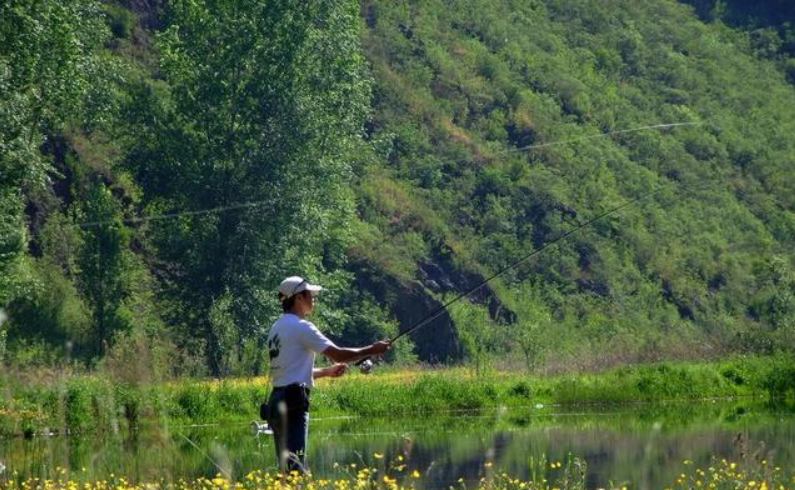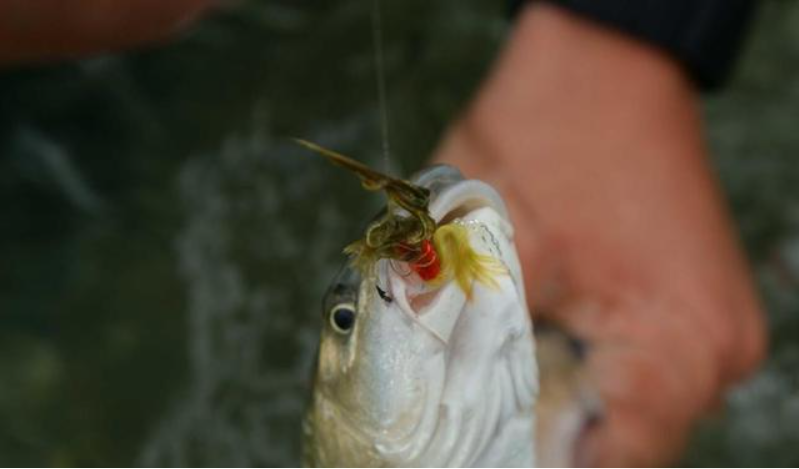Fly fishing, originating in Europe and America, is a stream fishing method that uses artificial flies to imitate winged insects like flies or dragonflies landing on the water. This technique attracts predatory fish known for their aggressive nature. The method is often called the “dancer in fishing” due to the elegant movement of the line during casting.

Fly Fishing Gear Selection
1. Rod: Choose a fly fishing rod with a fast or medium-fast action, measuring over 2.7 meters in length. It should be lightweight, as shorter or overly stiff rods can hinder casting.
2. Line: The fly fishing line typically consists of three parts. The first is the backing line, made of strong and soft nylon, wound inside the fly reel. It serves as a reserve when battling large fish. The second part is the main line, attached to the backing, which is specialized fly line available in sinking or floating types. These are used to target predatory fish in mid-water or surface layers. The third part is the leader, connected to the main line, about 1.5 meters long, and made of high-strength transparent nylon.

3. Artificial Flies: A key feature of fly fishing is the use of artificial flies, often made with feathers. Select fly patterns based on the season, environment, and target species. For example, lighter-colored flies are suitable in spring, while brighter hues can enhance attraction in summer.
4. Reel: Use a fly fishing reel and ensure the drag system is properly adjusted.